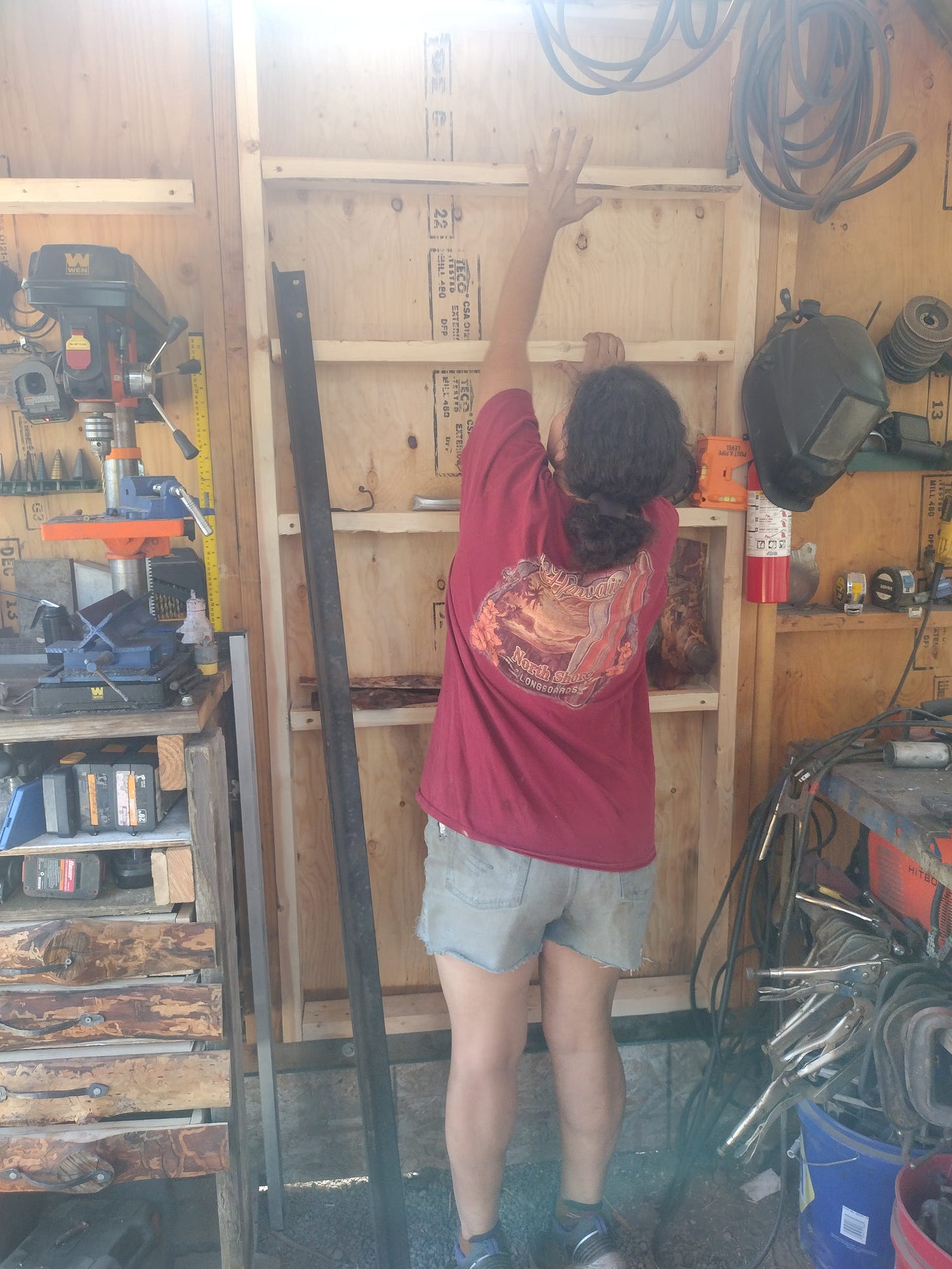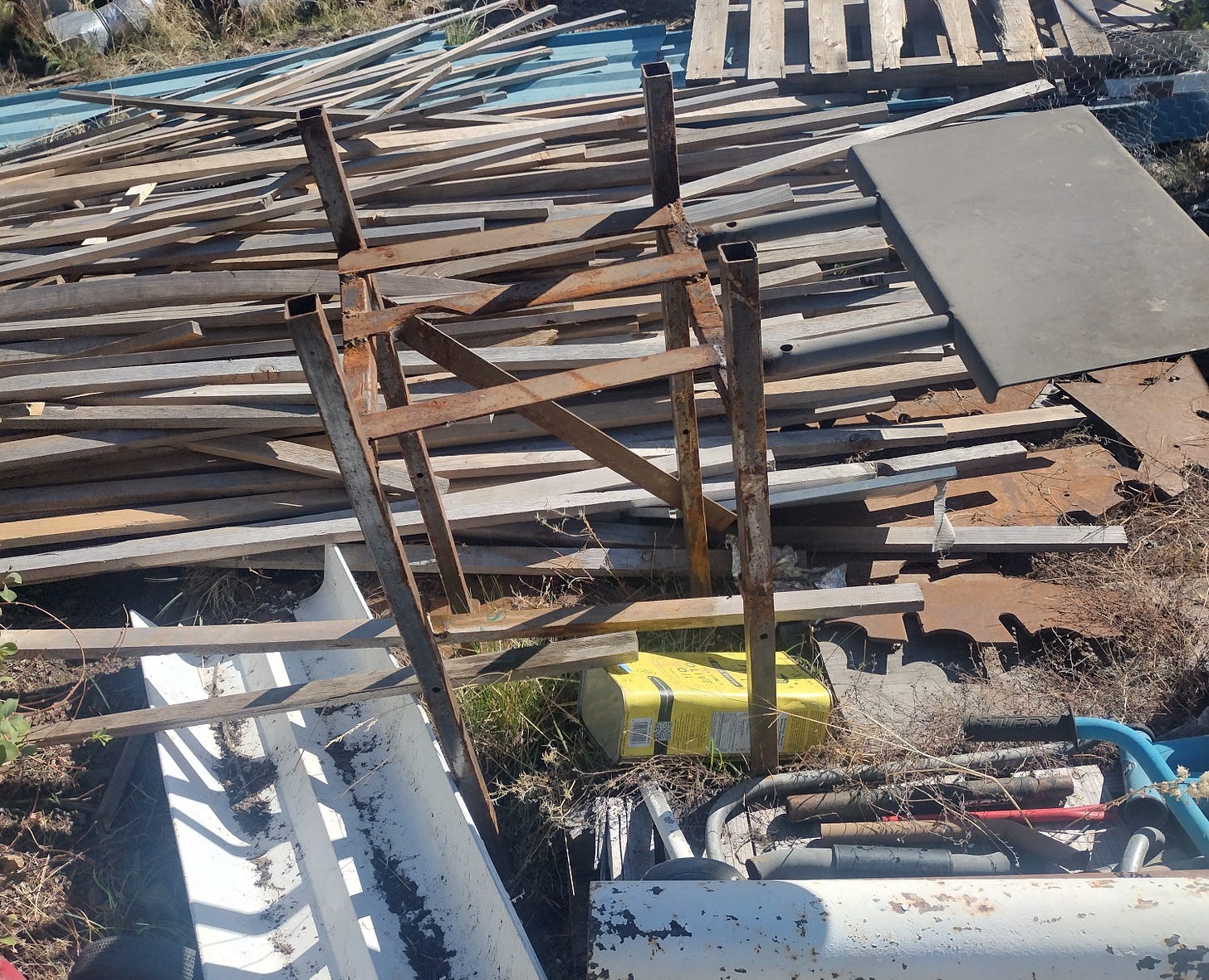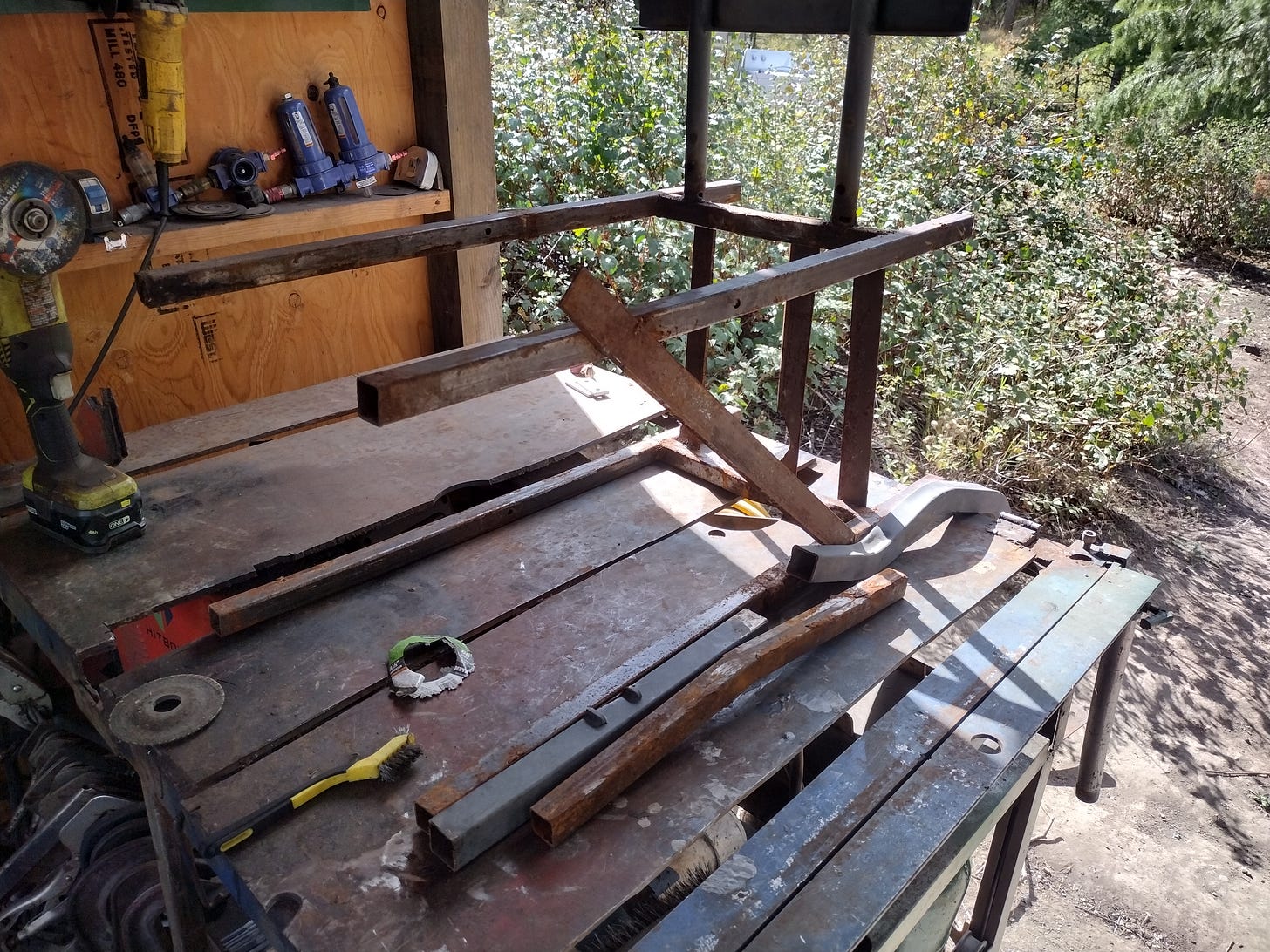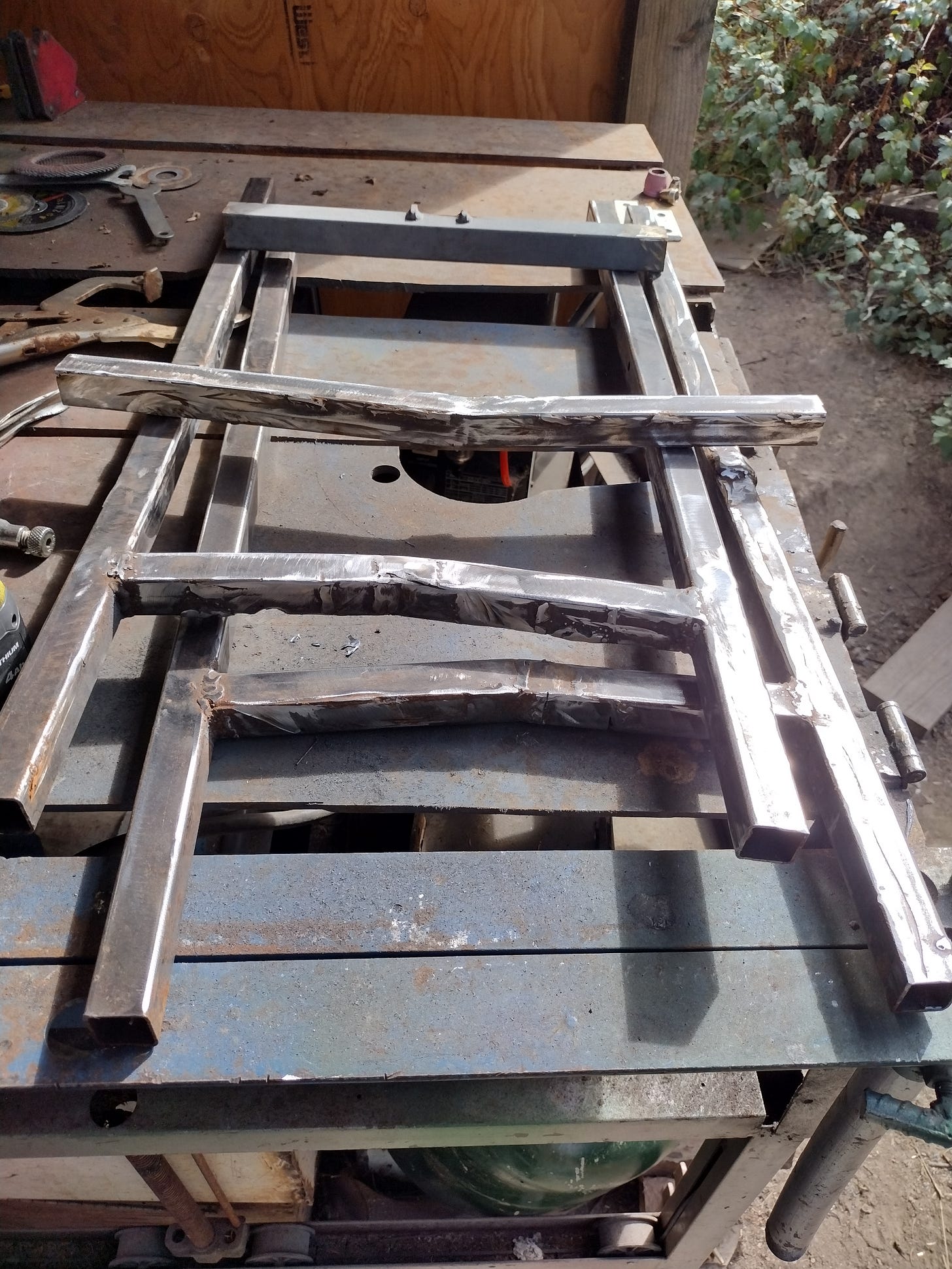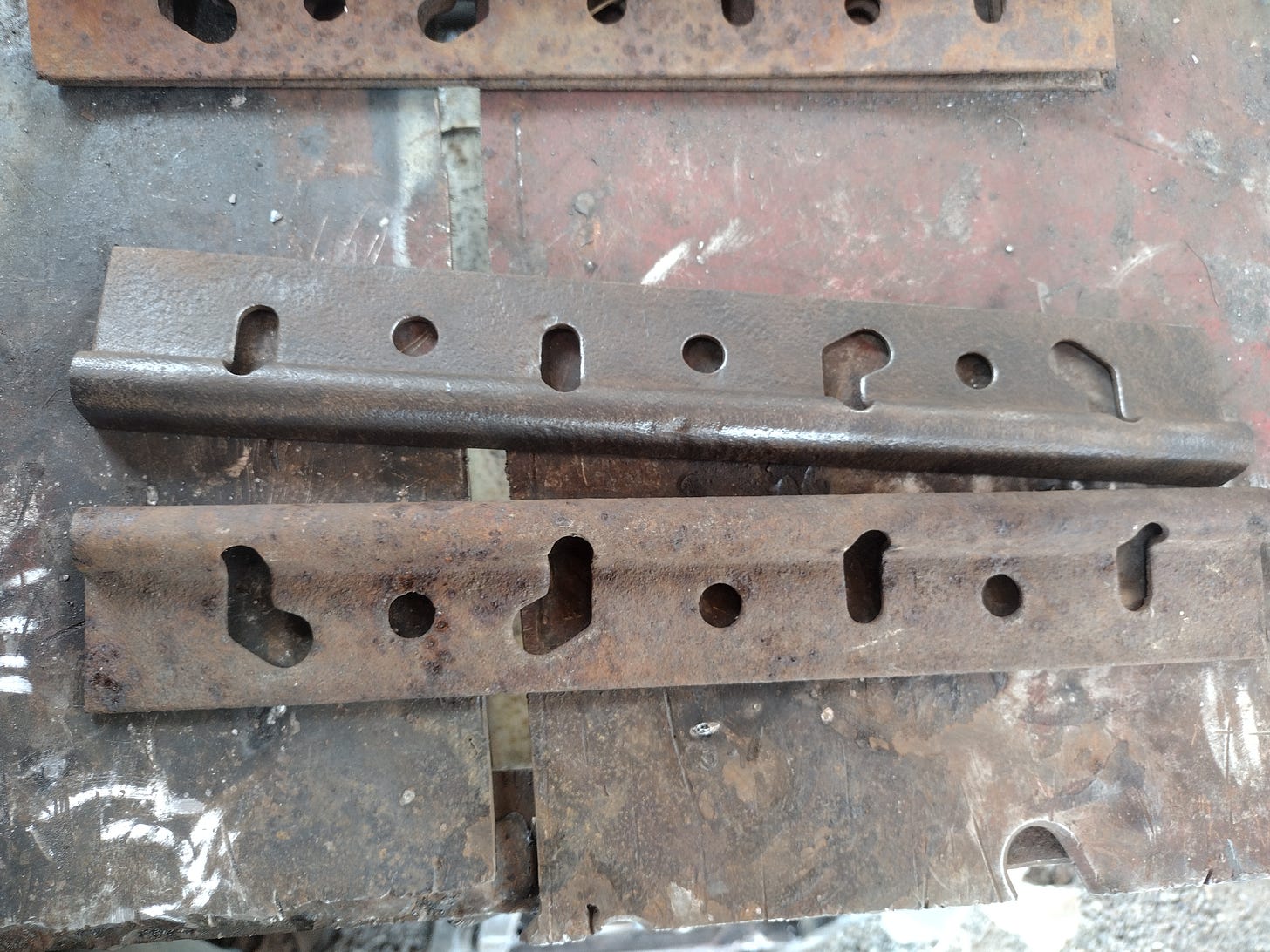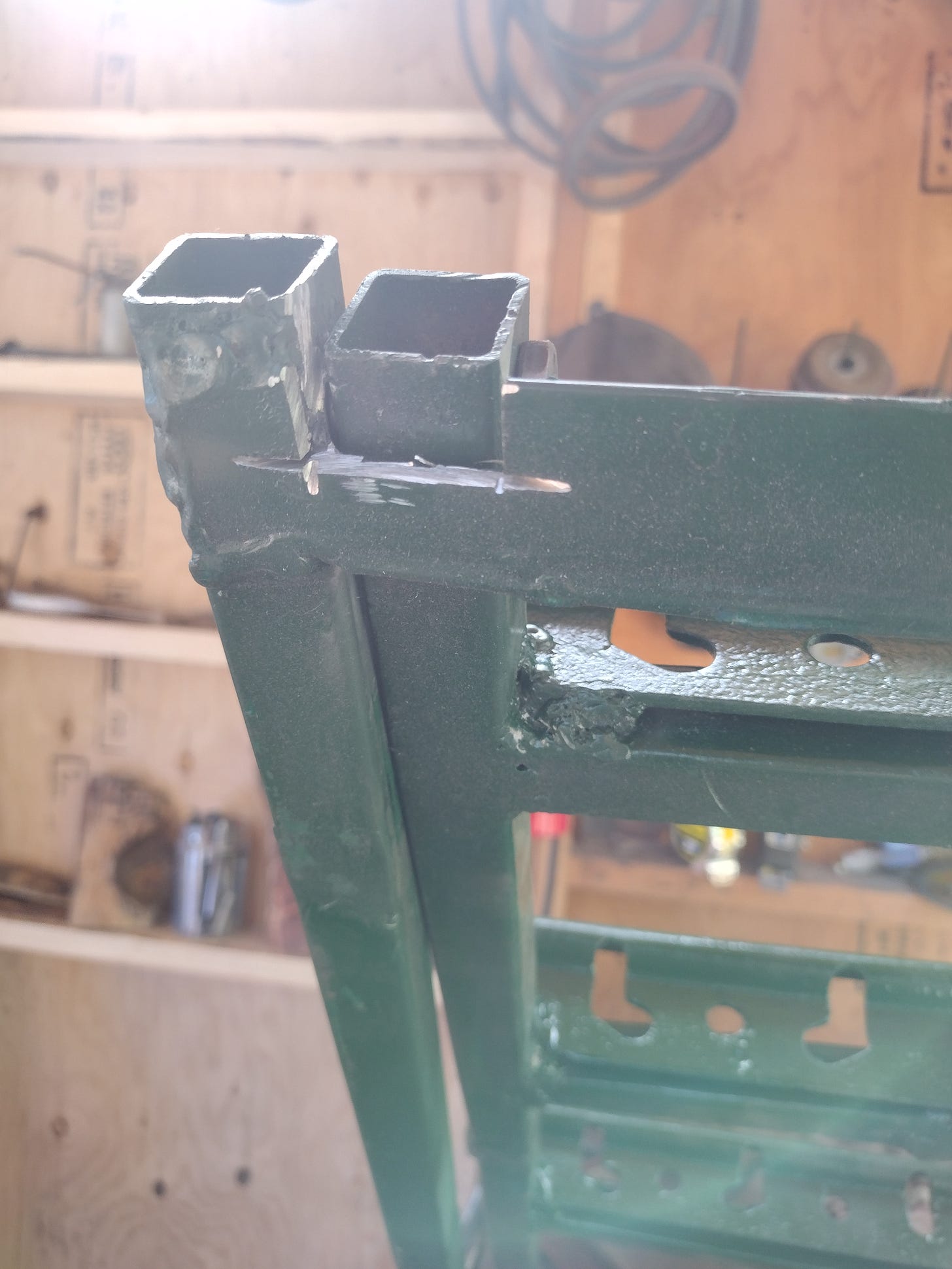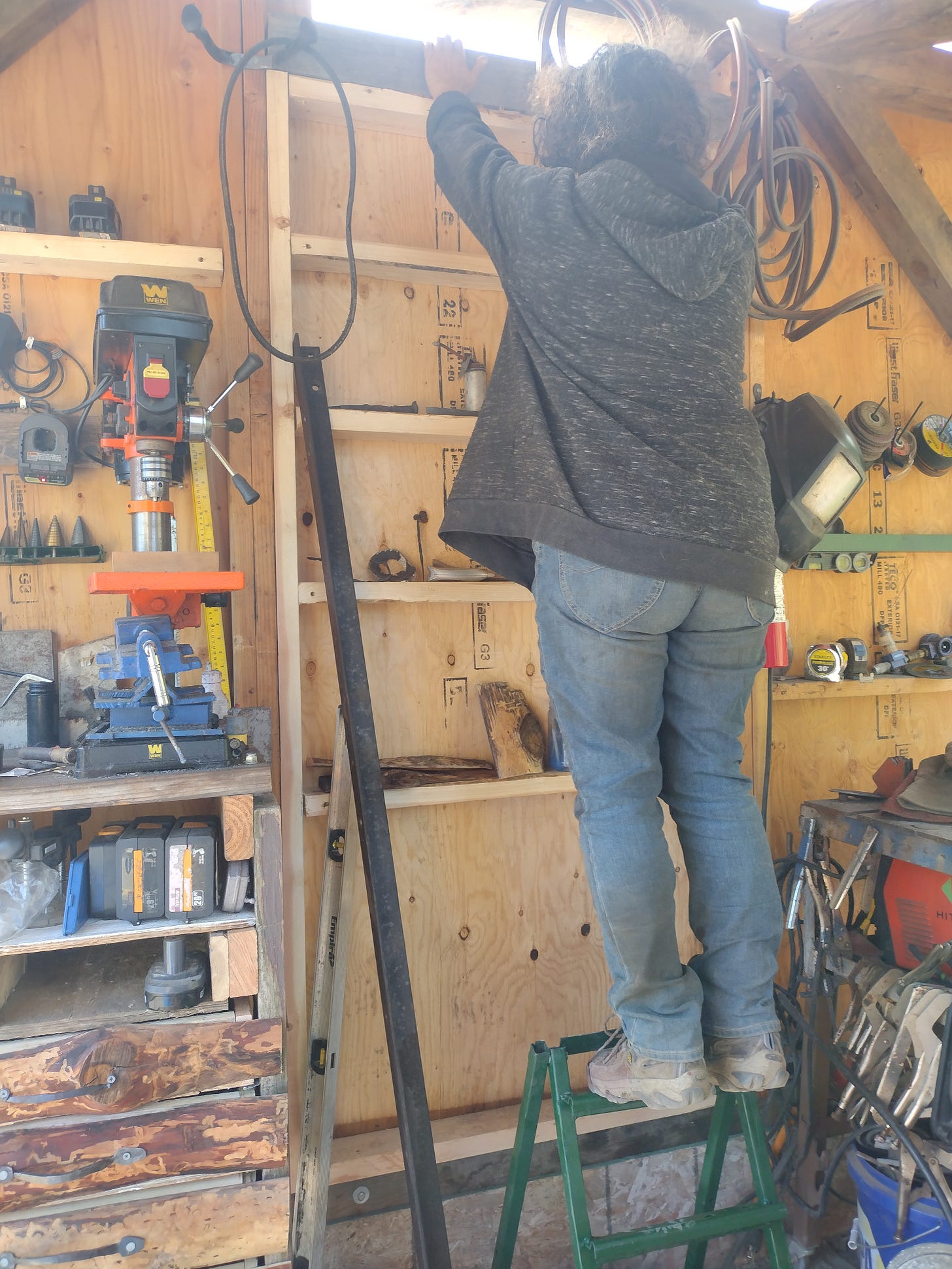Those of you who are here for the history and cultural think pieces, fear not! It’s fall right now, so most of my energy is going into winter prep and setting up for success next spring.
However, I did get a lot of writing done this weekend, so your regular Friday deep-dives will be returning this week.
But for now, on to Maker Monday!
This post is too image-rich for some email providers. If your client is giving you trouble with it, find it at http://jdanielsawyer.substack.com/
One of the things I learned from the life-detour I affectionately call my “homesteading boot camp” (where I wound up stranded during Covid next door to someone who’d built up bare land, and got myself apprenticed for a while), it’s that when you’re building your maker work spaces, height trumps square footage. Being able to put big pieces end-up makes maneuvering large projects a piece of cake—and not being able to do that is seriously constraining.
So when I built my forge building, I did an open vault that is about fifteen feet high at the apex. As a bonus, this lets me hang my cords and air/gas hoses way high, out of weld splatter range and where they won’t be underfoot.
Unfortunately, that creates the following situation:
And despite the fact that I’m a little taller than my pictured partner-in-homesteading, getting to those high hoses still involves climbing on workbenches, which can be inconvenient when you’re int he middle of a job.
Yeah, sure, on that one wall, you can currently climb the shelves…at least until I populate them.
I clearly need a step-ladder in the space. And because the space is cramped, it needs to be small, easy to put away, and light enough to move around.
The local hardware store does stock painter’s step-ladders, but they’re not cheap like they were before inflation, and, if I’m honest, they’re a pain to use (they require two hands) and they’re a bit too big to stow easily in the space.
I wanted something with a very thin profile, something I could operate with one hand and a kick, and something that wouldn’t cost me much.
So, to the scrap pile we go!
This weird frame held my first charcoal forge. I made it out of an auto-painting tent frame that I salvaged from a neighbor once upon a time—that frame was, in turn, made out of 1” square tube. So, some good material here to form the basis of a stepladder.
I’ve just gotta break it down.
So, after WAY too much grinding (because I ran out of chemical rust remover on another project, so I had to grind all the crap off), I went from this…
To this rough lay-out of parts and pieces (including a few other bits I pulled off the scrap pile.
Unfortunately, those cross pieces are arched, and they’re not all on the same side of the ladder. So, off they came, and then I slit them in the middle so I could straighten them…
And then I bent them straight and filled the gap with weld to form a new, straight piece (which, unfortunately, I forgot to get pictures of).
Since I’ve got big feet and those are 1” tubes, I figured I’d want some wider stair treads.
A rummage through the scrap pile produced some parts from a dead lawn tractor, which I think worked with one of its attachments. I laid them out and buffed out the rust with a wire wheel.
With them cleaned up, I notched the corners and welded them on at the proper angle so my treads would be 2” deep (which is plenty for a step stool) and, importantly, flat when the ladder was unfolded.
I also welded up the back side of the ladder, and hung both parts up from wires to spray paint them.

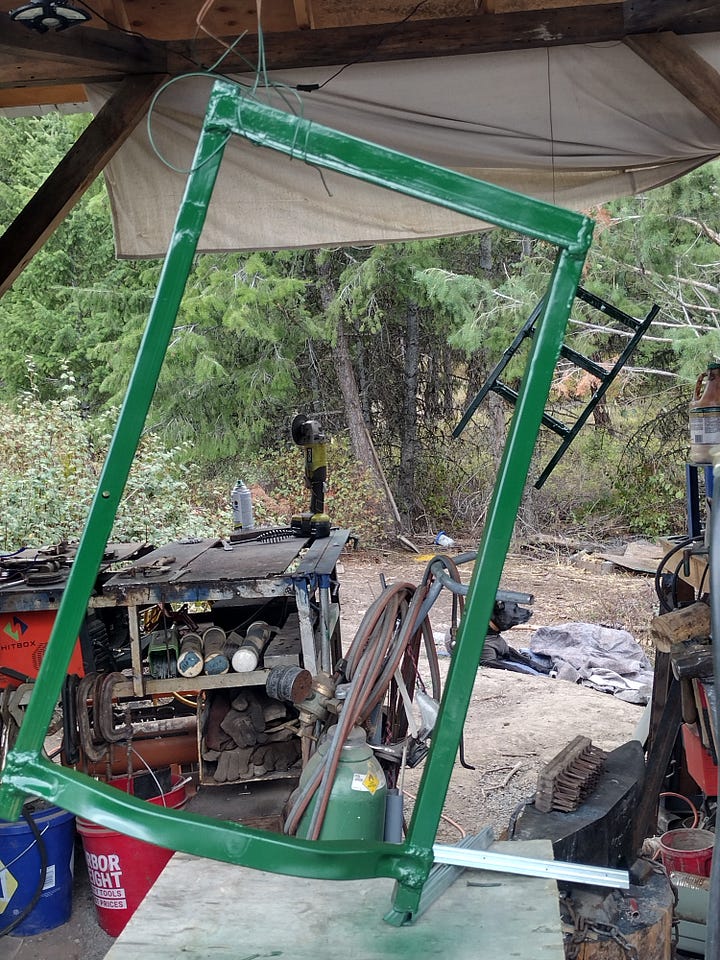
After an overnight paint cure, it was time to put it all together. I drilled a couple holes and used some 1/2” bolts from the bolt bin, to put them together. Washers sat between the square tube to lubricate the folding/unfolding action.

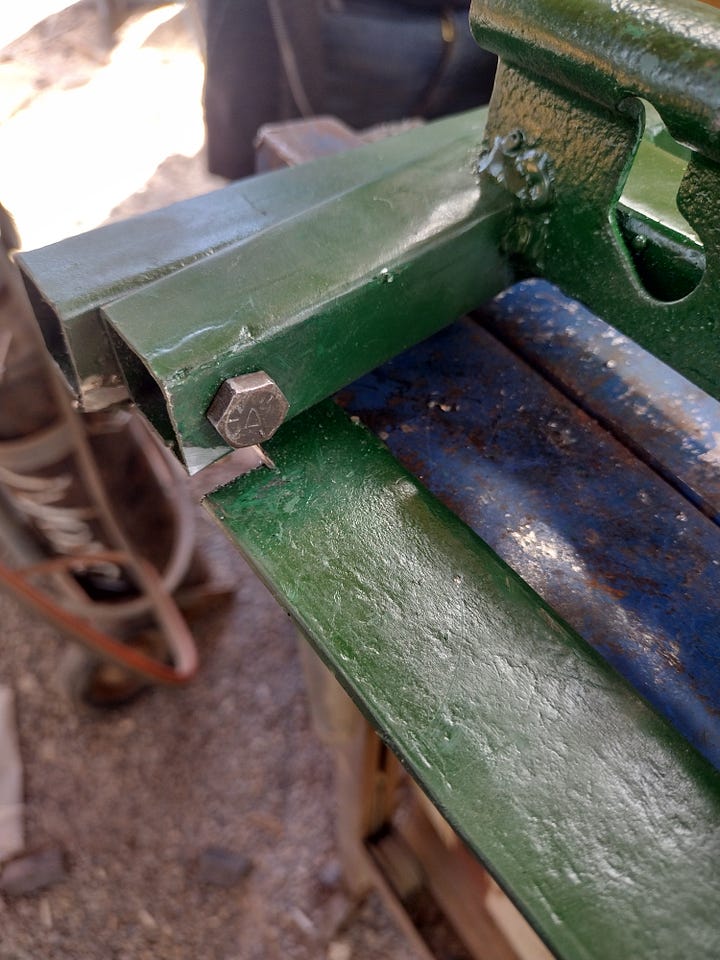
At which point, I discovered an error that annoyed the hell out of me.
My original intent with this design was to round off the top of the inner frame so that it would easily deploy, and then use a chain to keep the two halves of the ladder from spreading too far.
Unfortunately, I didn’t control for warpage when I was welding. When you put heat into metal, it expands, and then re-contracts as it cools. When you do it unevenly, it doesn’t return to its original shape—some distortion remains. One of the things that makes the difference between a good welder and a great welder is patience—you have to control that heat, and deploy your welds so that you evenly distort the piece, so it evenly un-distorts as it cools.
I am not, by nature, a patient man, so I am not a great welder (except on accident).
The distortion I introduced while welding screwed up the tolerances, so my original plan simply would not work. There was no way this ladder was gonna open and close properly unless I made an ugly adjustment…
Like cutting a notch out of the back on each side so that the stupid thing could open.
On the upside, though, this hack fix meant I didn’t need to use a chain to keep the ladder from opening too far. The cross piece served perfectly well as a back-stop.
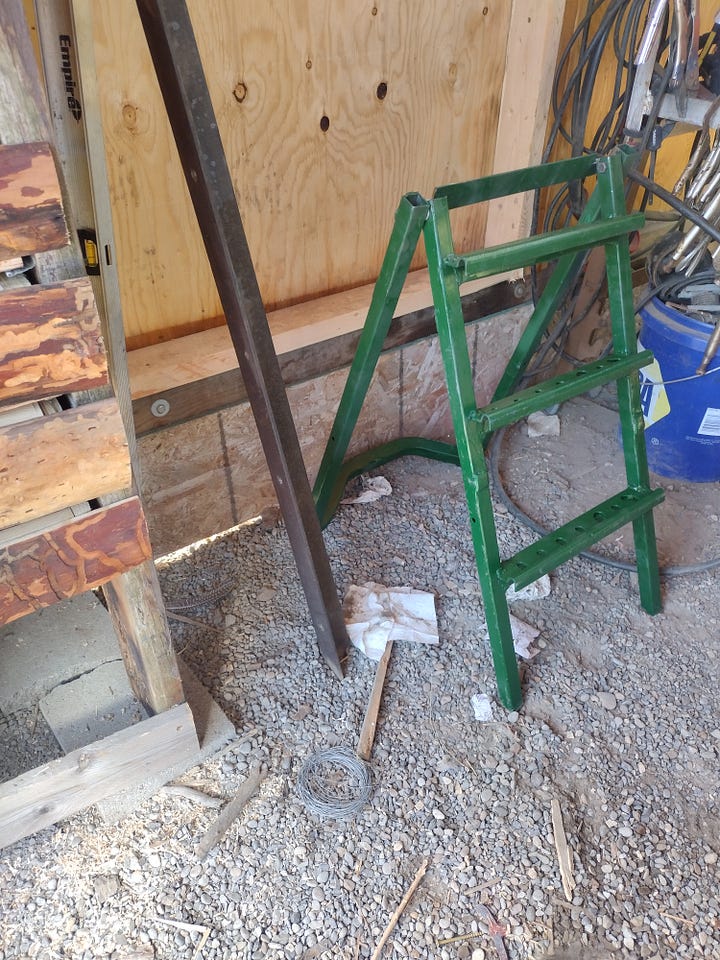
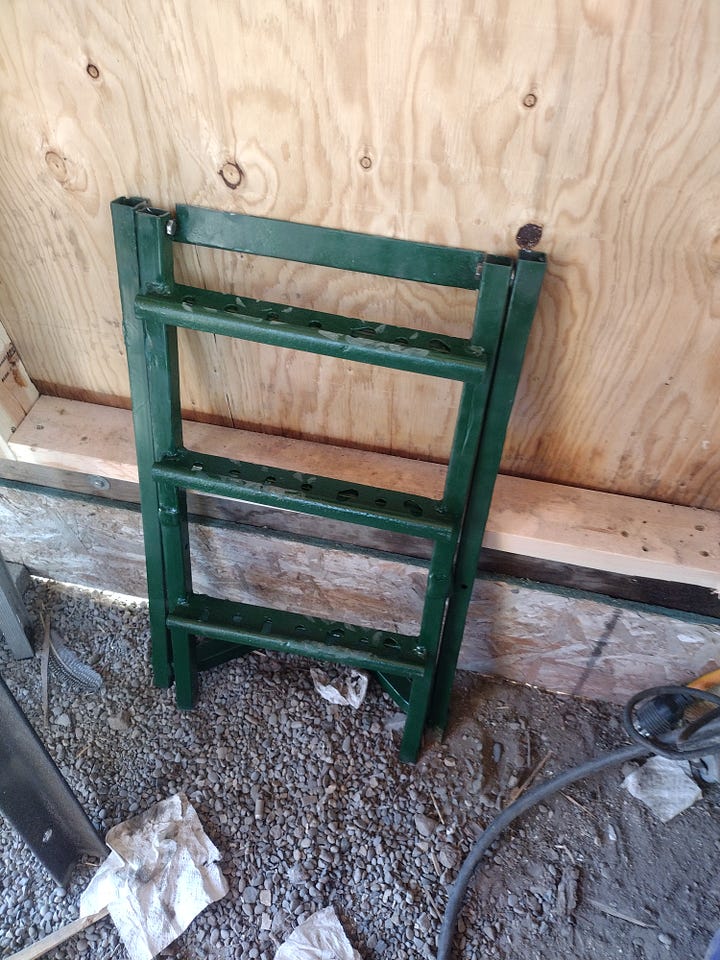
It opens nicely, and slides away nicely.
But, the real test…will it actually support a person without creaking, swaying, or breaking?
Why yes! Yes it will!
So, the hard numbers. I used about $5 in welding rods and angle grinder wheels, about $3 of spray paint, about $1.50 of gasoline for the generator that powers the welder. Everything else, including the bolts, came from scrap.
So, a total cost of a little under $10 for a ladder of a size and sturdiness that would cost $40-50 if ordered online.
But the best part…it’s another thing that exists in this world that I made, which is going to last longer than I do. And it’s actually nice enough that someone might use it after I’m dead and gone.
If you’re looking for fresh stories, you can find my novels, short stories, visions, and dreams (along with some how-to books and literary studies) by clicking here.
When not haunting your Substack client, I write novels, literary studies, and how-to books. If you’re feeling adventurous click here to find a ridiculous number of fiction and nonfiction podcasts for which I will eventually have to accept responsibility.
This column is a big part of how I make my living—bigger now due to recent exciting events which you can read about here. Because of this, I’m offering a 20% lifetime discount off the annual subscription rate. If you’re finding these articles valuable, I’d be honored to have you join the ranks of my supporters!




